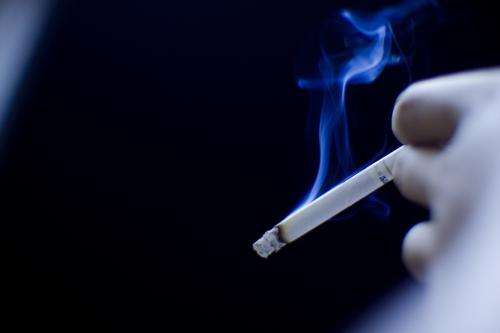Study details cancer-promoting mechanisms of overlooked components in secondhand smoke

Tobacco smoke, diesel exhaust and oil combustion carry polycyclic aromatic hydrocarbons – PAHs that are known to cause cancer. But of these PAHs, the obviously dangerous high-molecular-weight PAHs like benzo[a]pyrene (BaP) have received the vast majority of research attention. Their low-molecular-weight cousins have been largely overlooked, in part because studies have shown that these compounds alone aren't very successful at mutating genes in cancer-causing ways.
A University of Colorado Cancer Center study published in the journal PLoS One explores two of these low-molecular-weight (LMW) PAHs – 1-methylanthracene (1-MeA) and 2-methylanthracene (2-MeA) – and shows that while they don't necessarily cause cancer, 1-MeA promotes conditions that will likely allow cancer to grow.
"There's a big distinction between initiating cancer and promoting it," says Alison Bauer, PhD, CU Cancer Center investigator and assistant professor at the Colorado School of Public Health. Her study showed that in a mouse cell model using a progenitor cell of lung cancer, the LMW 1-MeA promoted inflammation and increased mitogenic pathways, both of which are linked to tumor promotion. 2-MeA, while nearly structurally identical, did not.
"These LMW PAHs have been considered less of a concern," Bauer says, "but we're finding evidence that's not the case. They're not likely initiating the cancer, but it looks as if they could promote it."
Among other effects, Bauer and colleagues found that 1-MeA disrupts communication between cells, affecting the "gap junctions" across which adjoining cells pass information. 1-MeA also upregulates the gene COX2, which has been shown in other studies to create an over-aggressive inflammatory response – and this inflammation in turn can promote tumor growth.
"There are many different PAHs in secondhand smoke," Bauer says. "Some are obviously dangerous like BaP, which directly mutates genes. Others, like 1-MeA, we known very little about. Think about all these PAHs like chess pieces – first you have to know how each piece moves and then you can start looking at how they all work together."
Bauer points to these PAH mixtures as the next step in research. Eventually, knowing the effects of these mixtures could help evaluate the risks of different combustion products. The work could also lead to new therapy targets if, perhaps, some of the changes promoted by these LMW PAHs prove preventable or reversible by medicines.
"With smoking rates decreasing, we think this problem is going away, but high levels of secondhand smoke still exist in the U.S., for example in some apartment buildings," Bauer says. "And around the world, in China, Russia, Poland and many other countries, secondhand smoke is still a major issue. Knowing the effects of these LMW PAHs like 1-MeA could help us prevent or treat cancers associated with them."
More information: www.plosone.org/article/info%3Adoi%2F10.1371%2Fjournal.pone.0065150


















